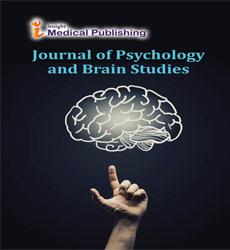Cultural Engagement Supports Individuals with Cognitive Impairment
Anthony P. Monaco*
Department of Human Genetics, University of Oxford, Oxford, United Kingdom
- *Corresponding Author:
- Anthony P. Monaco
Department of Human Genetics
University of Oxford, Oxford, United Kingdom
E-mail: anthony.monaco@well.ox.ac.uk
Received Date: November 07, 2021; Accepted Date: November 21, 2021; Published Date: November 28, 2021
Citation: Monaco AP (2021) Cultural Engagement Supports Individuals with Cognitive Impairment. J Psychol Brain Stud Vol.5 No.11:54.
Opinion
Museums and cultural institutions are increasingly attempting to adapt to the interests and requirements of the communities in which they are housed. This means, among other things, that these institutions must be involved in the health and well-being of society, as well as the development of cultural activities aimed at people with cognitive impairment, a group of people who is growing globally as society ages and the prevalence of dementia rises. Despite the fact that more study remains to be done, the concerned industries are aware of the potential and advantages of activities for this group. There is yet to be a comprehensive review that focuses on the benefits of cultural activities for those who are cognitively challenged. In recent years, museums, cultural institutions, and the heritage sector in general have experienced significant transformations, with the goal of transforming stigmatised or intimidating settings into places where people can discover happiness and quality of life.
Museums are proven to be a formidable ally in health and wellness programmes, responding to a global trend in which they are increasingly aware of anything that has the potential to contribute positively to the population's health and well-being. The expanding number of museums and institutions that have decided to design and carry out programmes to benefit persons affected by diseases such as dementia of Alzheimer's type (DAT) and cancer, among others, is reliable confirmation of this involvement. Cognitive impairment is a broad medical concern because it occurs concurrently with a variety of disorders. CI is defined by the Centers for Disease Control and Prevention as memory loss, trouble remembering, concentrating, or learning new things, as well as a sensation of confusion that worsens or repeats more frequently, even impairing decision-making and daily activities. In a mild stage, the person with CI may be able to live a regular life despite abnormalities in some cognitive skills. The causes of CI are numerous and can result in either transient or irreversible CI. Mental problems, viral diseases, vitamin insufficiency, dehydration, toxins, or pharmaceutical reactions are some of the causes of reversible CI. Traumatic brain injury, Parkinson's disease (PD), Friedreich ataxia, Huntington's disease (HD), amyotrophic lateral sclerosis (ALS), cardiovascular accidents, multiple sclerosis, normal ageing, and neurodegenerative disorders are the most common causes of irreversible CI. Some of these factors are not usually related with CI. Another significant element is the expected number of people who will be diagnosed with DAT in the next years, according to experts.
The WHO predicts that there are currently 50 million individuals living with dementia, with that figure anticipated to rise to 152 million by 2050. The most commonly reported results of music therapy were increases in general cognition, QoL, emotional well-being, or self-esteem, as well as reductions in depression symptoms. It is worth noting that, despite the fact that none of the included ICTs acknowledged it, considerable verbal and language fluency improvements were recorded in three SRs. Theatre, as a performing art, can be a beneficial tool for exploring the human being's innermost emotional, affective, and social elements. This form of intervention can give socialising and communication, as well as other emotional well-being results. With 74 patients diagnosed with CI in the included studies, art appreciation and art creating were the most commonly conducted therapies. One of the explanations could be because art has always been an excellent means to communicate and express oneself; ancient philosophers previously associated it with the author's life and its way of expressing and communicating it. Active dance exercises are frequently utilised to improve motor function in patients with CI.
People with Parkinson's disease have a chronic degenerative movement illness that causes issues with motor function, while other non-motor symptoms are also connected with the disease. Even though most dance therapy publications focus on dance as an active exercise, even watching someone dance offers benefits for those with CI. Seeing someone dance has nearly the same benefits as listening to the music that person is dancing to, andso it is. The level or intensity of the benefits obtained by simply listening to music, on the other hand, is increased by listening to music accompanied by images of people dancing to it. This SR demonstrates that cultural treatments can increase participants' general cognition, QoL, emotional wellness, self-esteem, communication, and socialising, as well as reduce depression symptoms. Less broadly, a certain mode of cultural activity can also aid by increasing participants' motor function. However, this study found that cultural activities did not increase certain components of cognition, such as memory, verbal and language fluency, or daily functioning.
Open Access Journals
- Aquaculture & Veterinary Science
- Chemistry & Chemical Sciences
- Clinical Sciences
- Engineering
- General Science
- Genetics & Molecular Biology
- Health Care & Nursing
- Immunology & Microbiology
- Materials Science
- Mathematics & Physics
- Medical Sciences
- Neurology & Psychiatry
- Oncology & Cancer Science
- Pharmaceutical Sciences
